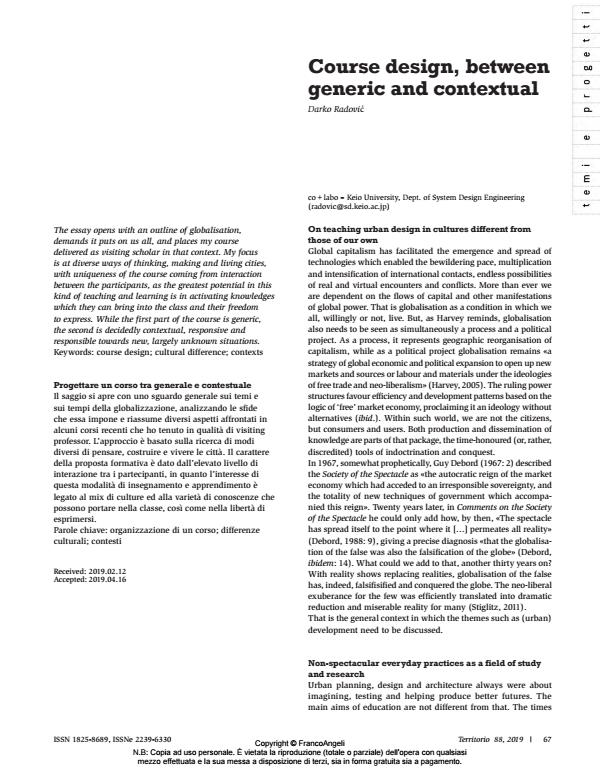Course design, between generic and contextual
Journal title TERRITORIO
Author/s Darko Radovic
Publishing Year 2019 Issue 2019/88
Language English Pages 5 P. 67-71 File size 572 KB
DOI 10.3280/TR2019-088010
DOI is like a bar code for intellectual property: to have more infomation
click here
Below, you can see the article first page
If you want to buy this article in PDF format, you can do it, following the instructions to buy download credits

FrancoAngeli is member of Publishers International Linking Association, Inc (PILA), a not-for-profit association which run the CrossRef service enabling links to and from online scholarly content.
The essay opens with an outline of globalisation, demands it puts on us all, and places my course delivered as visiting scholar in that context. My focus is at diverse ways of thinking, making and living cities, with uniqueness of the course coming from interaction between the participants, as the greatest potential in this kind of teaching and learning is in activating knowledges which they can bring into the class and their freedom to express. While the first part of the course is generic, the second is decidedly contextual, responsive and responsible towards new, largely unknown situations.
Keywords: Course design; cultural difference; contexts
Darko Radovic, Course design, between generic and contextual in "TERRITORIO" 88/2019, pp 67-71, DOI: 10.3280/TR2019-088010